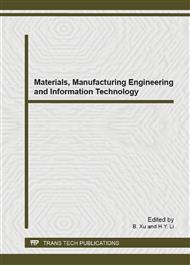p.258
p.262
p.266
p.270
p.274
p.279
p.285
p.289
p.297
Compression Behaviors of Stainless Steel Braided Coronary Stents and Polyvinyl Alcohol/Stainless Steel Braided Coronary Stents
Abstract:
With the appearance of reticular tubes, coronary stents can resist the compressive strength caused by vascular pulsation. This study braids stainless steel fibers with diameters of 0.12 mm and 0.08 mm with a braiding technique, and the resulting braids are then combined with polyvinyl alcohol (PVA) solution to form three stent types-S12, PVA/S12, and PVA/S8. S12 is braids that are made of 0.12-mm-diameter stainless steel fibers, PVA/S12 is S12 coated with PVA. PVA/S8 is braids made with 0.08-mm-diameter stainless steel fibers and then coated with PVA. Surface, braiding angle, and compression behavior of the coronary stents are observed by a stereomicroscope, analyzed by Motic Images Plus 2.0 software, and examined by an Instron 5566, respectively. The experiment results show that compared to S12 and PVA/S8, PVA/S12 has a smaller braiding angle, indicating its manufacturing process is not stable. Of the three coronary stents, PVA/S8 possesses the greatest recovery from the compression, and thus this study yields optimal coronary stents with satisfactory surface, braiding angle, and recovery ability.
Info:
Periodical:
Pages:
274-278
Citation:
Online since:
March 2014
Authors:
Price:
Сopyright:
© 2014 Trans Tech Publications Ltd. All Rights Reserved
Share:
Citation:


